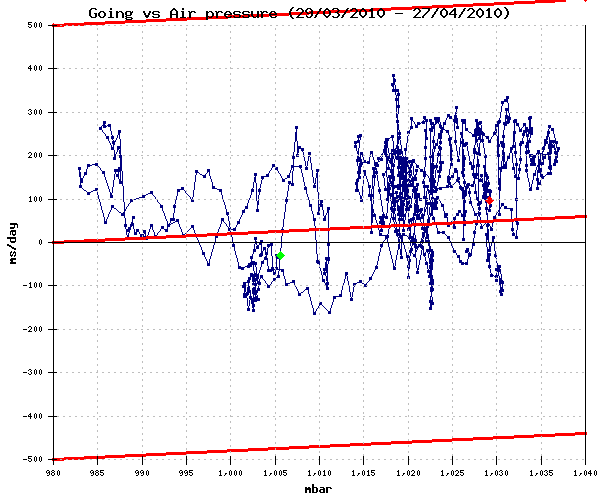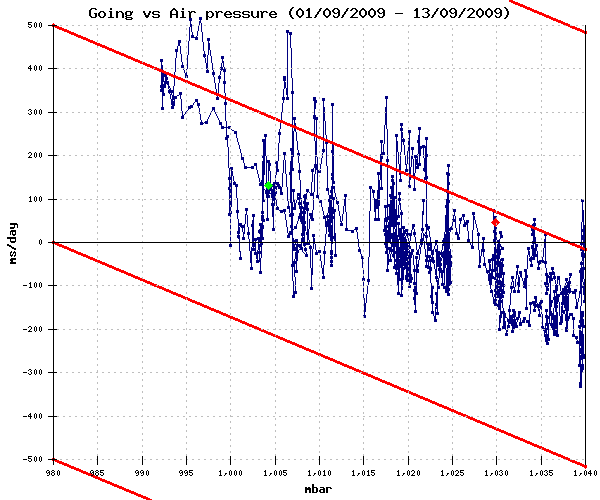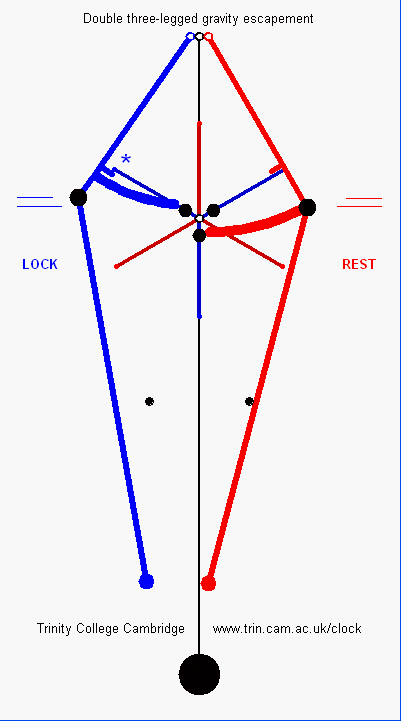At the clock change, just after midnight on 28 March 2010, a trial barometric compensator was installed. The idea is to correct for the slope of the "going vs pressure" graph. The slope is about -8ms/day per mbar and the main effect appears to be buoyancy caused by change in air density. The objective is to adjust the compensator to get a zero gradient. The
theory of a barometric compensator is a bit subtle.
Here is the data from the first 4 weeks since compensation, compared with before compensation:

After compensation (red lines +1.0ms/day per mbar)
|

Before compensation (red lines -8.6ms/day per mbar)
|
Click on the graphs for the latest, interactive data. It'll take a few weeks to evaluate its performance fully.

Barometric compensator.
Each of the two brass masses weighs 750g.
|

Compensator as installed early in the morning of
28 March 2010.
|

Side view of the compensator attached to the pendulum. There's a bit of a wobble on the pendulum - needs straightening out.







